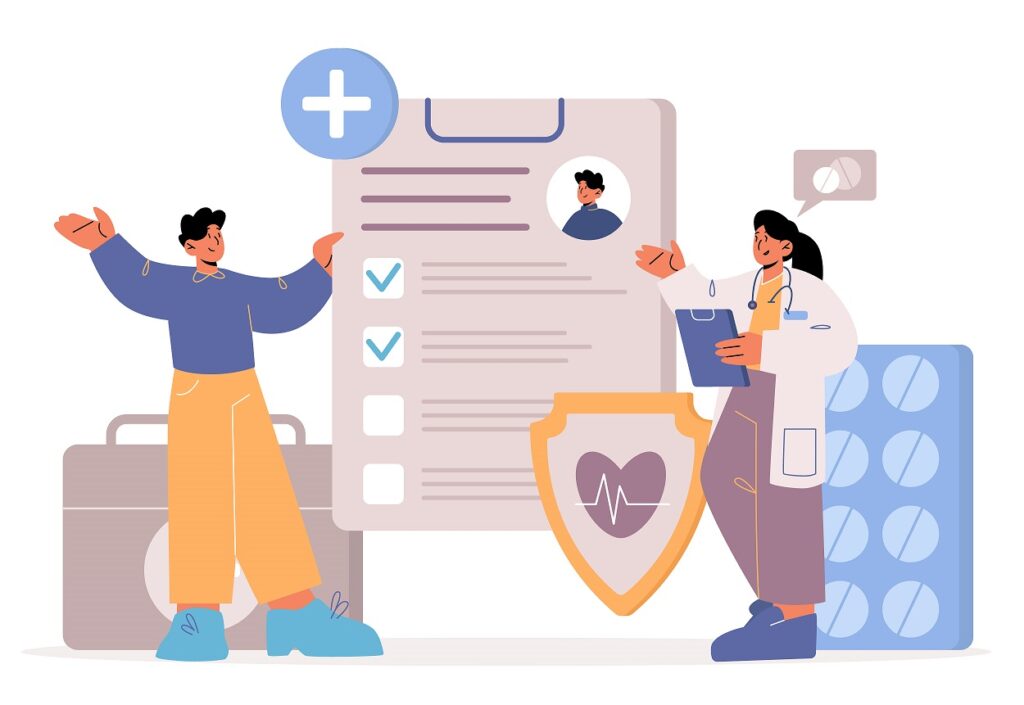If you’re exploring health insurance in India, you’ve likely come across the term “waiting period.” But what does it really mean? And why does it matter so much when choosing a policy?
In this in-depth guide, we’ll unpack everything you need to know about health insurance waiting periods — from the different types, how long they last, what they cover, and how you can smartly navigate them to ensure you’re truly covered when you need it the most.
What is a Waiting Period in Health Insurance?
A specified time in health insurance is a period during which a policyholder cannot claim certain benefits under the policy. In simpler terms, even though your policy is active, you won’t be able to avail of coverage for specific illnesses or conditions during this timeframe.
Insurance companies use waiting periods to protect themselves from individuals who may buy insurance only when they already need expensive treatment.
Why Do Insurance Companies Include Waiting Periods?
It is designed to:
- Prevent misuse of insurance by people purchasing policies only when they already know they need treatment.
- Control risks and claims from individuals with pre-existing illnesses.
- Ensure the financial sustainability of insurance providers.
It’s a way to create a balance so that people buy health insurance as a preventive tool and not just as a rescue plan.
Different Types of Waiting Periods in Health Insurance
Let’s break down the various kinds, you’ll encounter:
1. Initial Waiting Period
This is the basic waiting period that applies to all policyholders, usually 30 days from the date the policy starts.
- What it covers: No claims are entertained except in cases of accidental hospitalization.
- Why it exists: To prevent fraudulent or opportunistic claims right after buying the policy.
2. Pre-existing Disease (PED) Waiting Period
If you have any pre-existing health conditions like diabetes, hypertension, or asthma at the time of purchasing your policy, you’ll need to wait 2 to 4 years (depending on the insurer) before you can claim treatment costs related to those conditions.
Important tip: Always declare your existing conditions honestly to avoid claim rejection later.
3. Specific Disease Waiting Period
This applies to certain illnesses or treatments such as hernia, cataracts, varicose veins, ENT disorders, and more. The holding period for such conditions typically ranges from 1 to 2 years.
Note: Even if you don’t have these conditions at the time of purchase, this waiting period still applies.
Maternity benefits come with their own waiting period, usually 2 to 4 years, depending on the policy.
- Covers: Delivery expenses, newborn care, and sometimes infertility treatments.
- Ideal for: Couples planning a family should consider policies with shorter maternity waiting periods.
5. Waiting Period for Add-on Riders
If you’ve added any riders like critical illness or personal accident cover, these often have separate holding periods, commonly around 90 days.

How long is the Waiting Period in Health Insurance Policies?
The duration of the holding period depends on the type of health insurance policy and the insurance provider. Here’s a quick look:
| Type of Waiting Period | Typical Duration |
| Initial Waiting Period | 30 days |
| Pre-existing Diseases (PED) | 2 to 4 years |
| Specific Diseases | 1 to 2 years |
| Maternity Benefits | 2 to 4 years |
| Critical Illness Rider | 90 days |
Are There Policies With No Waiting Period?
Yes — though they’re rare and more expensive. Some group health insurance plans (usually provided by employers) may have no or minimal holding periods. Certain high-premium individual policies also offer reduced or waived waiting periods, but read the fine print carefully.
How to Reduce or Avoid the Waiting Period in Health Insurance
You can’t always eliminate the holding period, but here’s what you can do to manage it wisely:
1. Buy Early
Start your health insurance when you’re young and healthy. The earlier you start, the sooner you’ll be out of all holding periods before you even need them.
2. Choose Plans with Shorter PED Waiting Periods
Some insurers offer plans where the holding period for pre-existing diseases is just 2 years instead of 4. Compare and choose wisely.
3. Opt for Top-Up or Super Top-Up Plans
These are backup plans that kick in after a certain threshold (like Rs.3 lakh or Rs.5 lakh) and often have less restrictive holding periods.
4. Look for Loyalty Benefits or Continuous Coverage
If you’ve been with the same insurer for years, you might get reduced waiting periods as a loyalty reward or on policy renewal.
You can port (transfer) your health insurance policy from one insurer to another — and the credit for previous periods comes with you, provided you don’t have a break in coverage.
You can port (transfer) your health insurance policy from one insurer to another — and the holding period credit comes with you, provided you don’t have a break in coverage.
What Happens If You Need Treatment During the Waiting Period?
Unfortunately, you will have to bear the cost out of pocket. That’s why understanding the policy document and planning accordingly is so important.
If an emergency like an accident occurs, you’re covered even during the initial 30-day holding period. But for any other conditions, especially pre-existing diseases or maternity, you’ll need to wait out the period before you can file a claim.
Key Things to Remember About Waiting Periods
Here are a few golden rules to keep in mind:
- Always disclose your health history.
- Never assume full coverage starts from Day 1.
- Check the waiting period details in the policy brochure and the fine print.
- Compare policies across insurers based on holding period clauses, not just premium.
- Don’t cancel old policies before new ones mature — especially if you’ve already completed part of the holding period.
Best Health Insurance Plans in India with Low Waiting Periods
While the actual offerings may vary and should be double-checked before purchase, here are some popular plans with competitive holding period features:
- Niva Bupa Health Companion – Shorter PED waiting period and lifetime renewability.
- Care Health Insurance – Customizable options to reduce holding period.
- Star Health Family Health Optima – Affordable family floater with moderate holding periods.
- HDFC ERGO Optima Restore – Loyalty benefit options for reducing PED holding.
Pro Tip: Always use online comparison tools or consult with a certified insurance advisor to understand the exact clause and ensure you’re picking the right plan.
Conclusion: Be Proactive, Not Reactive
In a nutshell, the waiting period in health insurance is like a buffer zone — a time when your coverage isn’t fully active for certain conditions. But it’s not a deal breaker — it’s just something you need to understand and plan for.
Buy health insurance early, stay consistent with renewals, and choose a policy that suits your health profile and future needs. Being informed today means peace of mind tomorrow — and that’s what insurance is all about.



Leave a Reply